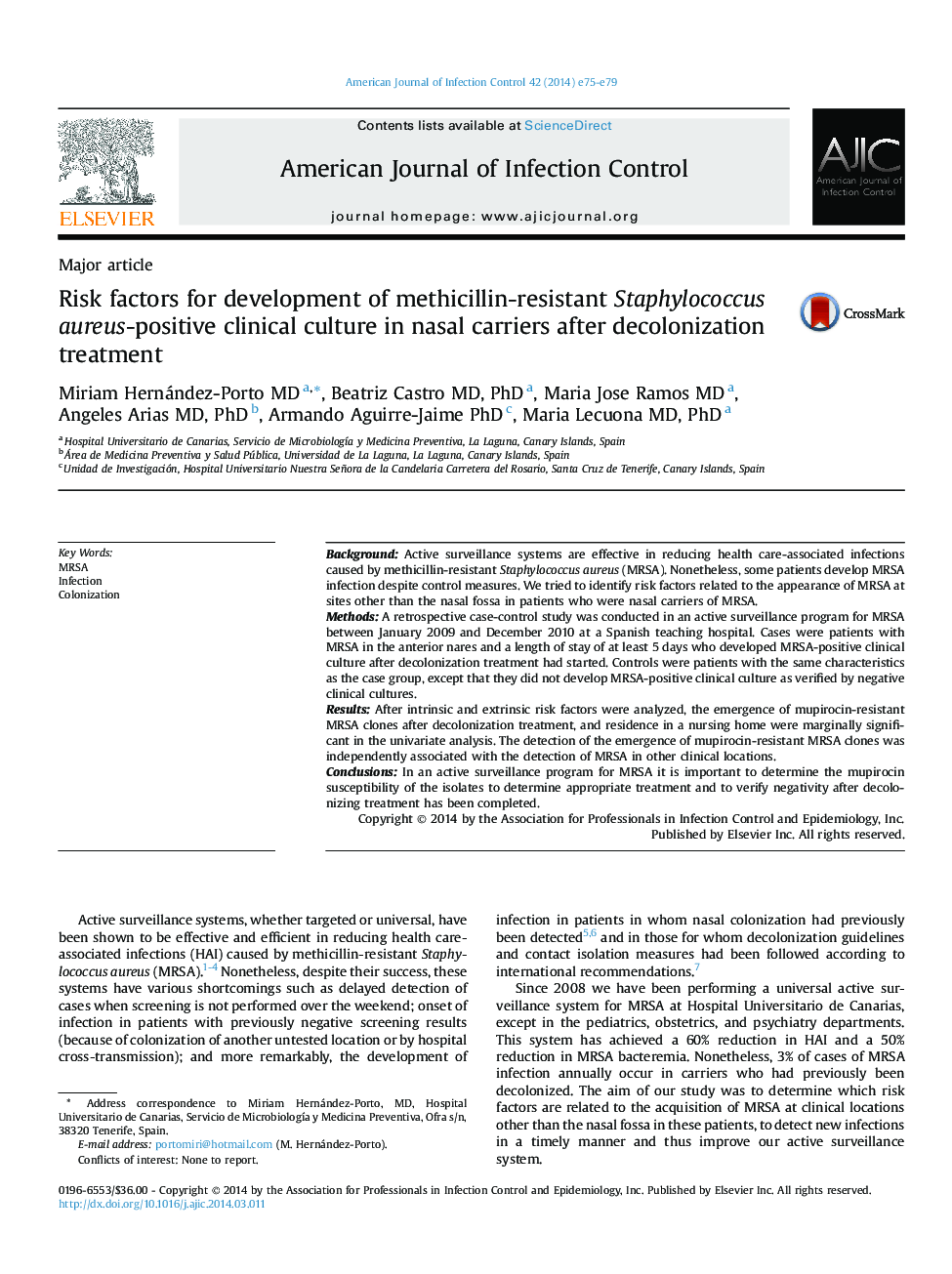| Article ID | Journal | Published Year | Pages | File Type |
|---|---|---|---|---|
| 2636986 | American Journal of Infection Control | 2014 | 5 Pages |
BackgroundActive surveillance systems are effective in reducing health care-associated infections caused by methicillin-resistant Staphylococcus aureus (MRSA). Nonetheless, some patients develop MRSA infection despite control measures. We tried to identify risk factors related to the appearance of MRSA at sites other than the nasal fossa in patients who were nasal carriers of MRSA.MethodsA retrospective case-control study was conducted in an active surveillance program for MRSA between January 2009 and December 2010 at a Spanish teaching hospital. Cases were patients with MRSA in the anterior nares and a length of stay of at least 5 days who developed MRSA-positive clinical culture after decolonization treatment had started. Controls were patients with the same characteristics as the case group, except that they did not develop MRSA-positive clinical culture as verified by negative clinical cultures.ResultsAfter intrinsic and extrinsic risk factors were analyzed, the emergence of mupirocin-resistant MRSA clones after decolonization treatment, and residence in a nursing home were marginally significant in the univariate analysis. The detection of the emergence of mupirocin-resistant MRSA clones was independently associated with the detection of MRSA in other clinical locations.ConclusionsIn an active surveillance program for MRSA it is important to determine the mupirocin susceptibility of the isolates to determine appropriate treatment and to verify negativity after decolonizing treatment has been completed.
